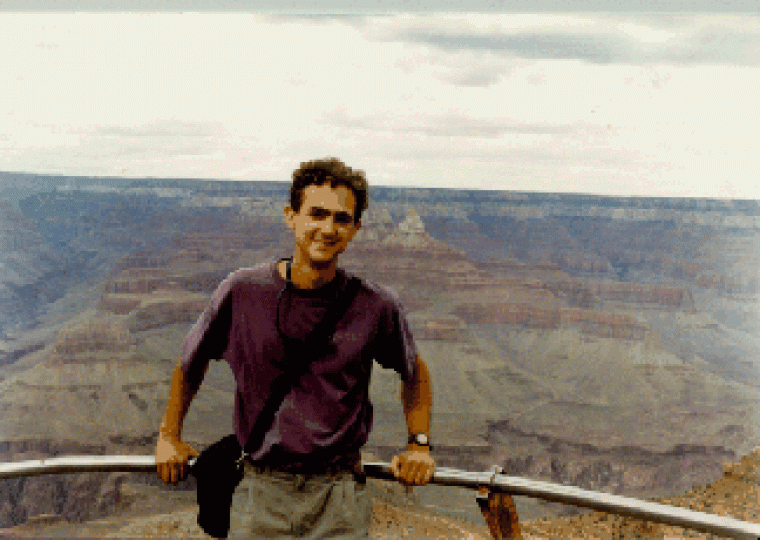Jason Rech

Jason Rech was awarded a two-year Space Grant Fellowship, co-sponsored by the University of Arizona Department of Geosciences.
Jason Reports:
In 1997 NASA captured the imagination of the American public and the world with its discovery of "life" on Mars and with the amazing images of the surface of Mars. The announcement by NASA in March of 1997 of 'evidence of life on Mars' let many Americans think about the possibilities of life on other planets. The news motivated President Bill Clinton to announce the need for increased research of Mars and other planets in our solar system. In July of 1997 NASA presented Americans with spectacular images of the surface of Mars taken by the Imager for the Mars Pathfinder camera (IMP), built at The University of Arizona. These events placed the American space program back in the minds of American children and created an ideal environment for teaching science.
My own area of scientific study is in arid geomorpholgy, soil geochemistry, and geoarchaeology. I have conducted paleoenvironmental and geoarchaeological research in the semi-arid region of Israel (1992-1996), the Gobi Desert of Mongolia (1996-1997) and most recently in the Atacama Desert of northern Chile.
The scientific outreach program that I am working on introduces science and the scientific method by focusing on the study of Mars and the use of arid environments on Earth to gain a better understanding of Mars. I am also using studies of arid environments to document global change on earth and discuss implications of anthropogenic effects on the environment. The program targets freshman and sophomore high school students in Tucson and surrounding areas and has two phases. The first phase of the program is to present a series of lectures to freshman and sophomore general science classes. This audience is composed of students who have mixed feelings towards science and different levels of understanding about the scientific method, since all high school students are required to complete these courses. The second phase of the program targets highly motivated students from these general science courses. Small groups of students are brought to the University of Arizona to participate in small laboratory exercises, and then taken out into the desert to get 'hands on' experience.
Fall 99 Update:
During the Fall semester, 1999, I feel that I made good progress with my NASA space-grant. Last year my outreach program was hindered by the difficulty in communicating with teachers and the problems with taking students out of the classroom. Despite a front-page add in the AMES newsletter, and brochures advertising my talks, few teachers contacted me. Last semester I developed ties with the Cooper Environmental Science Center (CESC) to hopefully overcome some of these difficulties.
CESC is an environmental camp, located in the Tucson Mountains, where mostly 4th graders go for either half-day or overnight field trips. This circumvents the problem of getting the children out into the field. To advertise my talks the staff at CESC mails my flyers out to teachers using CESC this year both at the beginning of the year and about a month before they come. Besides giving talks I am also preparing a geology field excursion that will be used even after my space-grant ends. I feel that CESC is presents many opportunities for space-grant fellows and that future space-grant fellows should utilize this facility if it fits within their outreach objectives.

